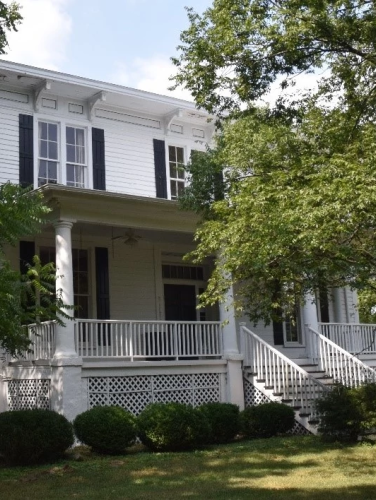
Ingleside
(ca. 1866)
Ingleside was the home of one of Mecklenburg County’s earliest professionally trained physicians.
7225 Bud Henderson Road, Huntersville, NC 28078
Built on the site of the original house of pioneer Scotch Irish settler Samuel Wilson, who acquired much of the surrounding land by land grant, Ingleside (Scottish for "fireside") was the home of Dr. William Speight McLean Davidson (1817-1873), a prominent physician and planter of northern Mecklenburg County. Started in the 1850s, it is believed that the stately Italianate (also known as Tuscan Revival) styled house was not completed until after the Civil War. A member of Davidson College’s first graduating class (1840), Dr. Davidson completed his medical training at the Medical College of South Carolina at Charleston in 1842. He then returned home to become one of Mecklenburg County’s earliest professionally trained physicians. His medical practice extended from Long Creek to Iredell County.
Property Quick Links
One of sixty-one grandchildren of Major John Davidson, the 18th century industrialist and planter who had his Rural Hill plantation home constructed on the Catawba River, Dr. Davidson married Jane Elizabeth Torrence (1823-1844) in 1840. His only child, James Torrance Davidson (1843-1874), was born to that union and died in young adulthood. Following the death of his first wife, Dr. Davidson married two more times: Rebecca Reed (1827-1862), a native of Alabama whom he also outlived, and Mary E. Johnston. Dr. Davidson died in 1873 and was buried in the graveyard at Hopewell Presbyterian Church. He was remembered as a resourceful and energetic citizen of his community. His widow moved to Charlotte soon after her husband's death. She died in 1896. Since then, the house has passed through several hands.
The narrow, winding Bud Henderson Road on which Ingleside is located is typical of many of the old country lanes in Northern Mecklenburg County. Originally a dirt wagon path between several plantations that also connected to the Salisbury Post Road, this lane probably dates from the early 1700s.

